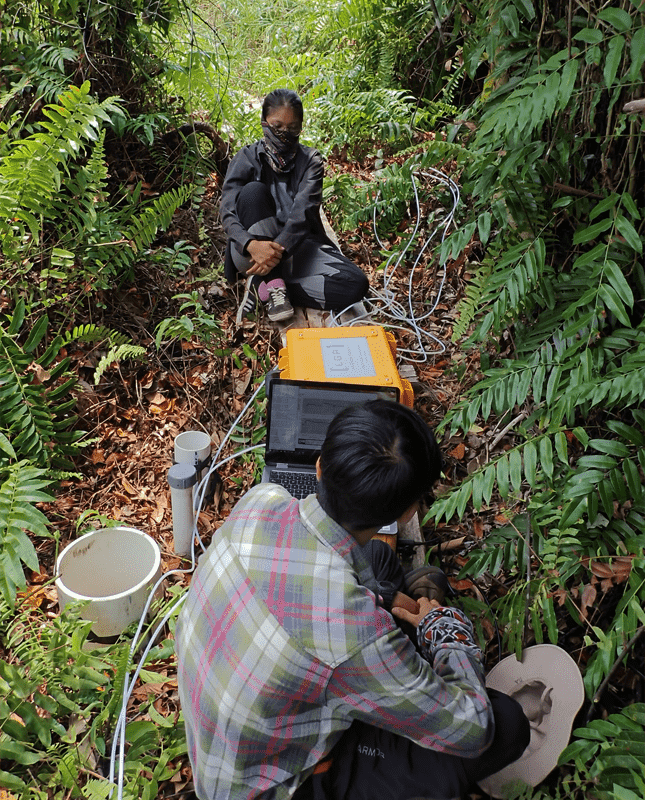.png)
Ajeng and the team are involved in a range of activities to measure and protect peat across the Katingan Mentaya Project.
The Katingan Mentaya Project protects an area of tropical forest that has an extraordinary natural characteristic lying just below the surface. While all forests provide exceptional capacity for drawing carbon dioxide out of the atmosphere and storing it in the growing vegetation and organic matter, the Katingan Mentaya forest holds more than 90% of its vast reserve of carbon underground, in its soil.
The forest sits upon an enormous peat dome, a massive sponge-like area of saturated soil. Peat soil is made through the slow accumulation of leaves, dead trees, plants and other organic material, which can only partially decomposed thanks to the volume of water it contains. These peatland conditions are found across the globe, but they are particularly prevalent in Indonesia and are crucially important natural environments, not only given the volume of carbon they contain, but also due to the intricate life systems they support.
The peat is one of the reasons why the Katingan Mentaya Project is so important, so maintaining its integrity is a core part of the conservation effort.
Ajeng Adventiaputri is part of the Research and Development Team and is based at the Katingan Mentaya Project HQ in the town of Sampit.
“Peat is a remarkable substance, not least because of the vital role it must play in our work to tackle the climate crisis. The Katingan peat dome covers a vast land area, but it is also deep, as much as 12 meters in places and it has taken tens of thousands of years to form – a natural history layered in deep time!
“But peat can also be dangerous. If the vegetation is cleared and the peat is drained, it becomes an increasing fire risk. Therefore, it is vitally important we monitor, test and protect the integrity of the peat. Partly this involves ensuring the health of the above ground vegetation, but it also includes the damming of canals and other peat rewetting activities.”
Ajeng and the team are involved in a range of activities to measure and protect peat across the Katingan Mentaya Project. Regular sampling work takes place deep in the forest, where the team use ‘auger’ and other peat core tools to collect samples. These are then taken back to the lab, where they are tested to gain an accurate picture of the peat content.


Where peatland has been drained outside the forest, the project team has developed a number of activities to rewet the soil. Prior to the Project starting, small canals were sometimes dug for irrigation or to make access for logging, Today the team works on resealing ditches and small canals to help maintain the water table.
Planting different types of trees on non-forest areas can also help create new microclimates on the forest floor. This in turn decreases wind, increases shade, lowers soil temperature and hence reduces microbial decomposition and fire risk.
“But beyond the scientific and conservation activities for peat protection, our outreach with the local communities, specifically the farmers, is also vital,” says Ajeng.
“The Katingan Mentaya Project is arguably above all a community activity. The team works hard to help local people understand the value of peat, the risks of fire if the peat is damaged and to develop alternative sustainable livelihoods that help maintain the natural environment.”
Buy carbon credits from Katingan
Climate change is a global challenge that requires global action. We can help you meet your commitments to deliver a brighter future.


